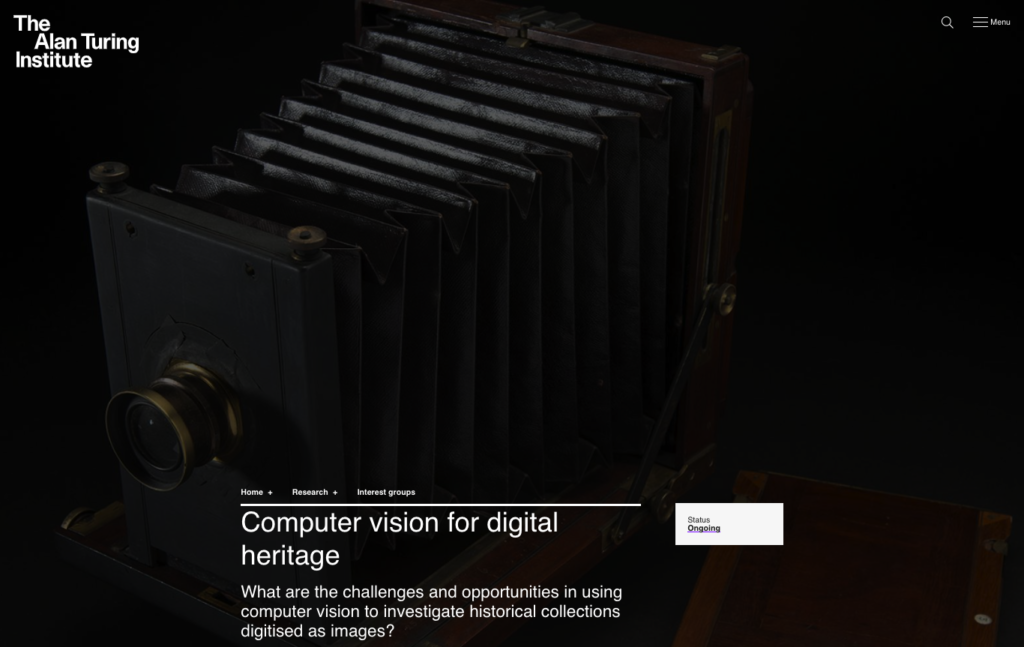Computer Vision for Digital Heritage SIG
New Special Interest Group at The Alan Turing Institute
We’re very pleased to announce that four Living with Machines colleagues (Kasra Hosseini, Daniel van Strien, Daniel Wilson, and myself) have founded a new Special Interest Group at the Turing.
In the last 2 years, there has been a growing community of people affiliated with the Turing who have an interest in computer vision (CV) and visual heritage collections. Because of the Living with Machines work using CV with historical maps, it was just a matter of time before we all began hanging out to talk about new research, interesting collections, and shared challenges. Early conversations with Polly Hudson and Stephen Law generated a lot of great ideas, and from there we just kept growing!
The Computer Vision for Digital Heritage (CVDH) SIG brings together Turing colleagues with others around the world to discuss and learn from each other.

While our early meetings were very Turing- and London-centric, the pandemic presented an opportunity to broaden the cachement area to the world (well, anyone who could be awake in the afternoon UK time). Now, this informal discussion group has been recognised as a Turing SIG. With this support, we hope to reach more researchers working at the intersection of CV and cultural heritage.
This group unites international researchers and heritage professionals who have an interest in using digitised image collections (maps, photographs, newspapers, books) in computer vision tasks. Applying CV to historical datasets raises issues of provenance and bias as well as processing challenges distinct from the recent or born digital images used in most computer vision work. We offer researchers at the Turing and beyond an opportunity to establish connections and build this new interdisciplinary field together. We focus on shared practices in data science around computer vision, providing a much needed center of gravity for a growing, otherwise disparate community.
Computer vision refers to a range of tasks and methods aimed at allowing computers to work effectively with images. Increasingly there is a growing interest in applying and expanding these techniques to work with heritage materials including maps, books, newspapers and paintings, which have been digitised. This raises questions about how well computer vision methods developed for other types of images perform on digitised heritage content as well as questions about how we effectively and responsibility work with collections at scale through automated methods.
If you’re interested in joining for future events, please sign up to the listserv.
